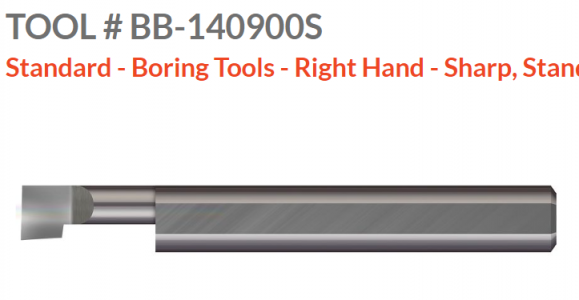- Joined
- Apr 27, 2021
- Messages
- 30
I'm a new owner of an SB 9A, and one of the first projects I need to do is turning what amounts to a funnel - an internal cone - in mild steel and/or stainless. The small end (throat) could be as small as 0.150", and the taper is about 15° half-angle (30° total), with a length of maybe an inch. What tooling do I use for this? Boring tools that will go to 0.150" are very thin along their entire length, since the assumption is that they need to do a hole, not a cone. They are also not very long, so 1 inch might be a stretch. I predict that they would not last long with my skills  .
.
My tool-making skills are also not great, so if I grind one myself, it needs to be simple. I was thinking I could start with a 3/8" HSS rod and grind the end down into a cone that's a bit shy of 30° - perhaps 25°. The tip needs to be a bit smaller than 0.150". Then grind off the top half (top, as seen when the rod is mounted in the tool holder) of the end for a distance about 3/8" back from the tip. That's it. Although this will have 'some' clearance for the cutting edge, I suppose I should also grind the underside of the cutting edge back to a 7° angle. And a flat or two on the shank to make sure it gets mounted at the proper rotation and doesn't twist, in the QC tool holder.
Is there an easier/better way to do this? Is there an off-the-shelf product that would work?
My tool-making skills are also not great, so if I grind one myself, it needs to be simple. I was thinking I could start with a 3/8" HSS rod and grind the end down into a cone that's a bit shy of 30° - perhaps 25°. The tip needs to be a bit smaller than 0.150". Then grind off the top half (top, as seen when the rod is mounted in the tool holder) of the end for a distance about 3/8" back from the tip. That's it. Although this will have 'some' clearance for the cutting edge, I suppose I should also grind the underside of the cutting edge back to a 7° angle. And a flat or two on the shank to make sure it gets mounted at the proper rotation and doesn't twist, in the QC tool holder.
Is there an easier/better way to do this? Is there an off-the-shelf product that would work?


